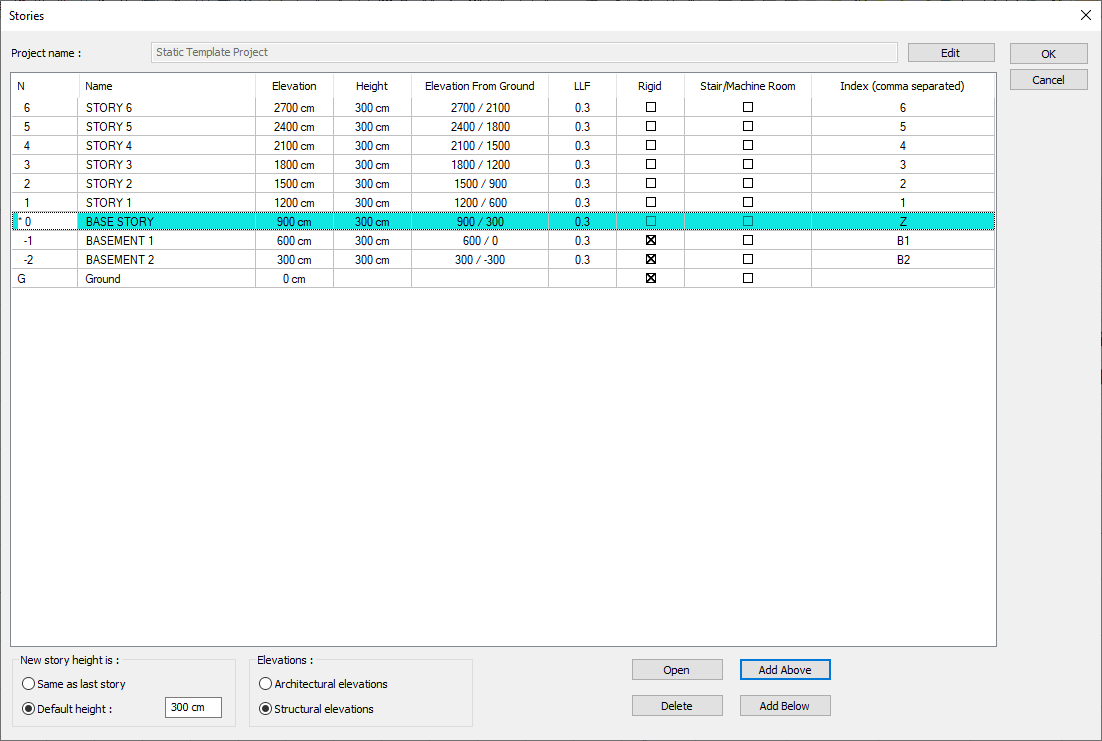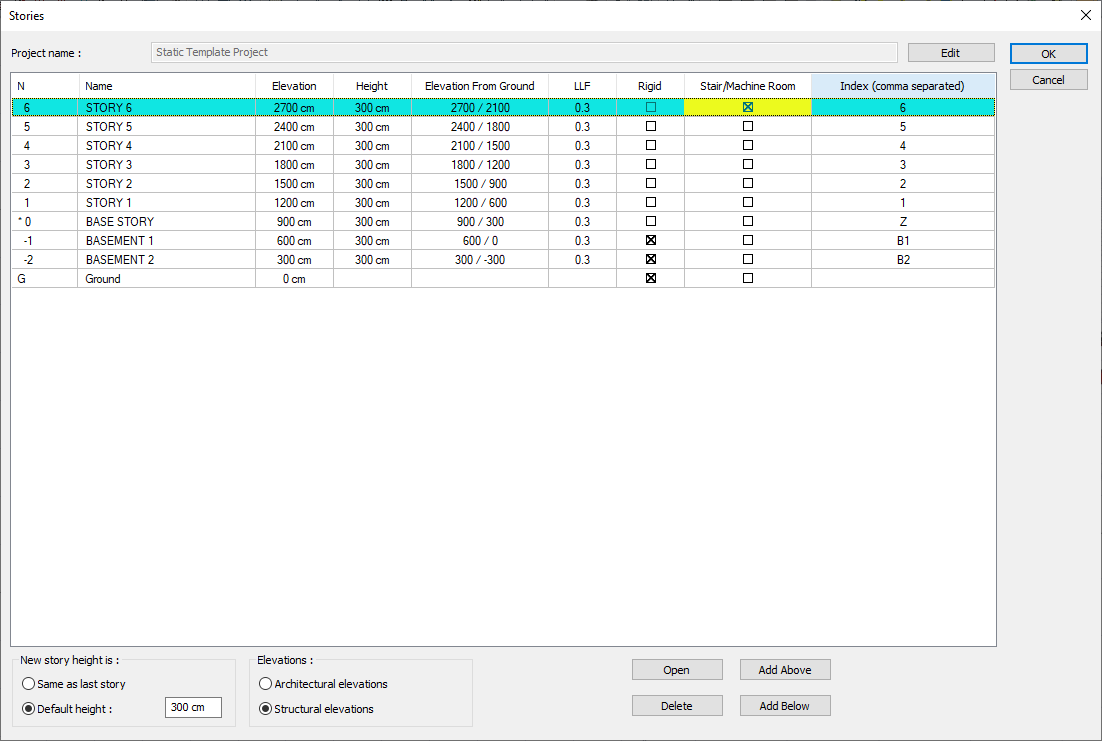Period Requirement for Structures Including Rigid-Basement Floors (3.3.1)
The requirement that rigid basement walls surround the building from at least three sides is controlled by the user.
The condition that the ratio of the natural vibration period calculated for the whole building including the basement floors to the natural vibration period calculated in the same direction without taking into account all the basement masses including the ground floor in the same load-bearing system, in the direction of each of the building axes perpendicular to each other, must be less than 1.1. is controlled automatically.
In buildings with basement and buildings without basement that do not meet any of the above conditions, the building floor is automatically defined at the foundation top level.
While determining the building height H N , the option to ignore the small-mass extensions such as elevators and engine rooms on the roof slab is under the control of the user.
ICONS
H N = Building Total Height
T p, all = In the dominant vibration mode in the direction of each of the building axes perpendicular to each other, the natural vibration period
T p calculated in the same direction for the whole building including the basement floors , top = In the dominant vibration mode in the direction of each of the building axes perpendicular to each other, Natural vibration period calculated in the same direction without taking into account all basement masses including the ground floor in the carrier system.
According to Article 3.3.1.1 of TBDY , buildings that meet both of the following conditions are considered as basement buildings . Each of the following two conditions providing Bodrumlu buildings at building base, defined the basement floor level floor curtains in the upper elevations.
(a) Rigid basement screens must surround the building on all sides or at least three sides.
(b) orthogonal in the dominant vibration mode in the direction of each of the building axis calculated for the entire building, including basements natural vibration period (T p, all ) is included laying ground floor in the same carrier system all basement mass calculated in the same direction irrespective of the natural vibration period The ratio of (T p, top ) to less than 1.1 (T p, all ≤1.1 T p, top ).
Article 3.3.1.1 (a) is a condition under user control. Condition 3.3.1.1 (b) is calculated automatically for buildings with basement. The table titled "Period Control for Rigid Basement Acceptance" of the Dynamic Analysis Report is shown in the image below. In this table , T p, all ≤1.1 T p, upper condition is checked and reported in accordance with Article 3.3.1.1 (b) of TBDY .

If both the conditions (a) and (b) of Article 3.3.1.1 (a) and (b) of TBDY are fulfilled, a rigid basement is accepted and the building height H N is defined from the floor floor level at the top level of the basement walls. In this case, “Rigid” should be checked from the Stories window.

If any of the conditions 3.3.1.1 (a) and (b) are not met, the rigid basement acceptance shall not apply. In this case, basements and buildings without basement buildings ' upper elevations of the building will be defined on the basis base. In this case, the building height H N is the height from the foundation top level to the building top level. If any of these two conditions are not met, the Rigid column marks should be removed from the Stories window and the analysis should be repeated.

While determining the building height H N according to Article 3.3.1.3 of TBDY , extensions with small masses such as stairs and machine rooms above the roof slab may not be taken into account. When the stair/machine room option is selected from the Stories window, this floor is not taken into account in the building height H N.

Next Topic
